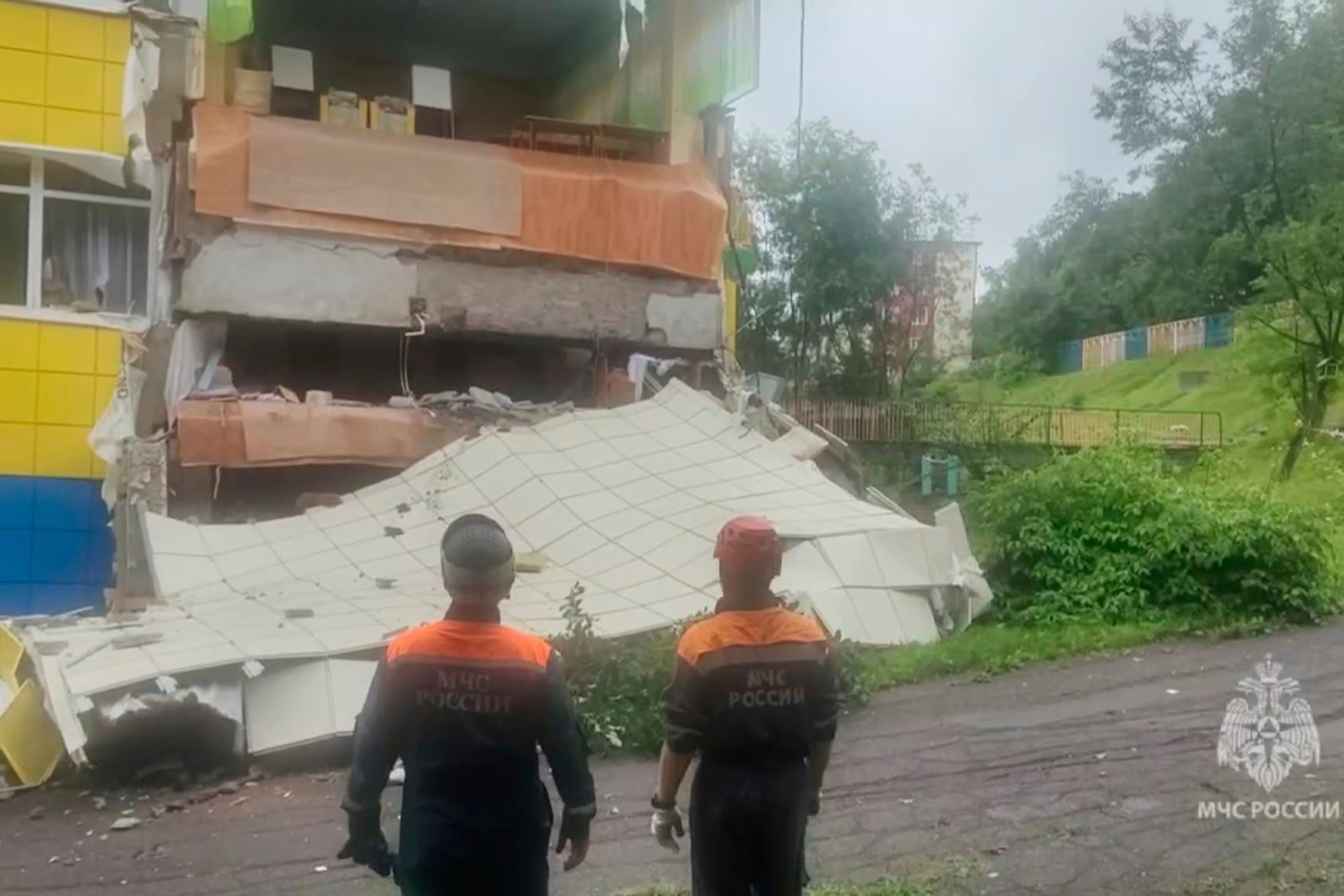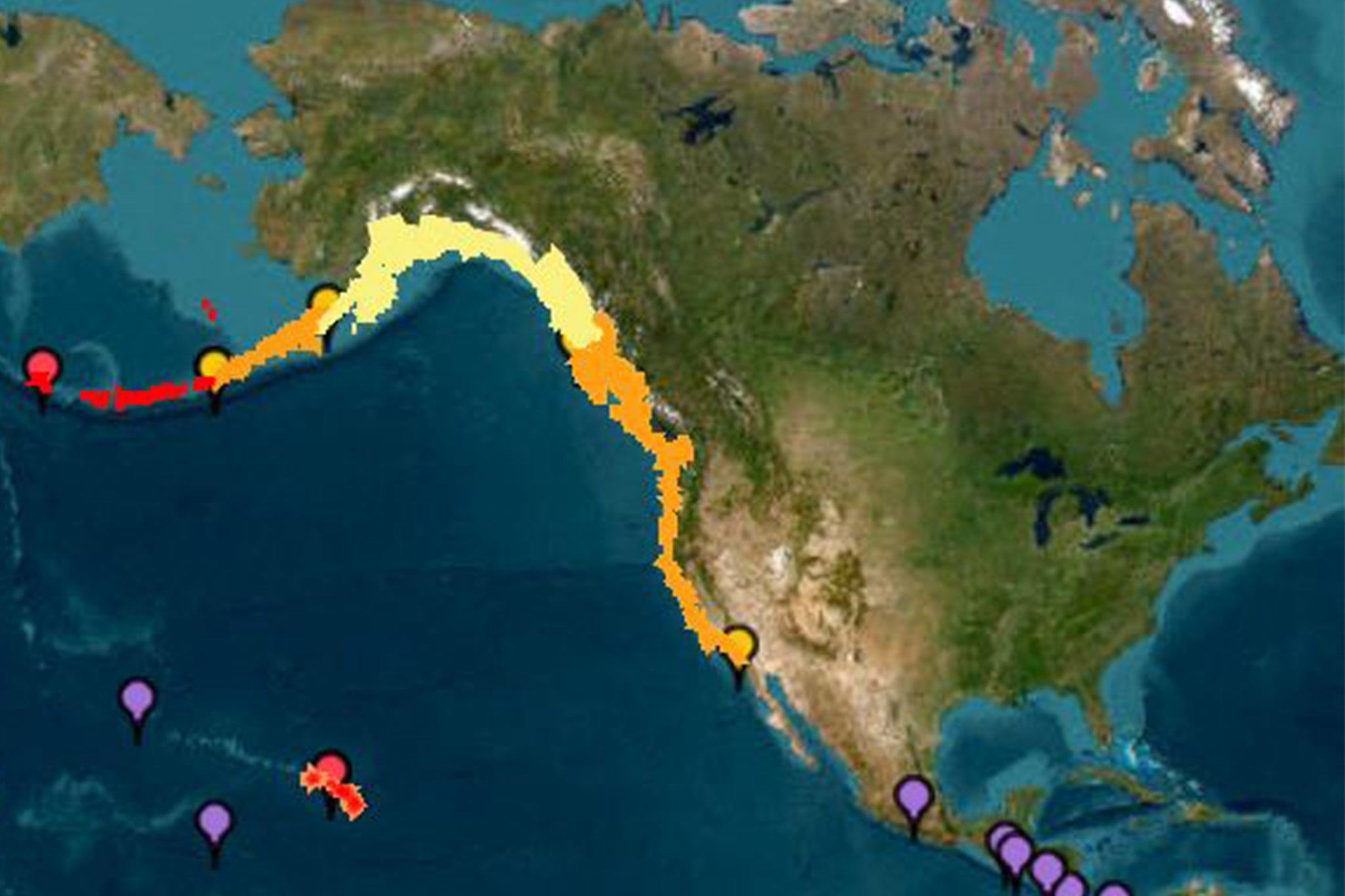Your support helps us to tell the story
From reproductive rights to climate change to Big Tech, The Independent is on the ground when the story is developing. Whether it’s investigating the financials of Elon Musk’s pro-Trump PAC or producing our latest documentary, ‘The A Word’, which shines a light on the American women fighting for reproductive rights, we know how important it is to parse out the facts from the messaging.
At such a critical moment in US history, we need reporters on the ground. Your donation allows us to keep sending journalists to speak to both sides of the story.
The Independent is trusted by Americans across the entire political spectrum. And unlike many other quality news outlets, we choose not to lock Americans out of our reporting and analysis with paywalls. We believe quality journalism should be available to everyone, paid for by those who can afford it.
Your support makes all the difference.Read more
One of the strongest earthquakes ever recorded rocked Russia’s remote far-eastern coast on Wednesday, sending tsunami waves towards Japan, Hawaii and the west coast of the US and triggering evacuation orders for millions of people.
The 8.8-magnitude quake, the sixth-strongest on record, was later followed by the eruption of a volcano on the Kamchatka Peninsula, near the epicentre.
However, despite the intensity of the tremor there were no reported deaths, nor any major damage.

open image in gallery
Much of Japan’s eastern seaboard was ordered to evacuate as tsunami waves hit (The Asahi Shimbun/Getty)
The quake struck at 8.25am Japan time with a magnitude of 8.8 and a depth of about 13 miles, according to the US Geological Survey. It was centred about 75 miles from the Russian city of Petropavlovsk-Kamchatsky. Multiple aftershocks of up to 6.9 magnitude followed.
In the immediate aftermath of the quake off Russia’s Kamchatka peninsula, residents fled inland as ports flooded, and several were injured while rushing to leave buildings.
In Japan, people flocked to evacuation centers, hilltop parks and rooftops in towns on the Pacific coast, with memories still fresh of the 9.0 magnitude earthquake in 2011 and the ensuing tsunami that caused a nuclear disaster. Evacuation orders were issued for tens of thousands of people, with ferries, trains and airports in the affected area suspending or delaying some operations.
A tsunami height of 10 to 13ft was recorded in Kamchatka, 2ft on Japan’s northern island of Hokkaido, and 2 to 5ft in San Francisco, officials said. Russia’s Oceanology Institute said tsunami waves might have been as high as 30 to 50ft in some sections of the Kamchatka coast.
Authorities in the Philippines, Mexico and New Zealand warned residents to watch for waves and strong currents. People were urged to stay away from coastlines until any wave surges passed in Fiji, Samoa, Tonga, Federated States of Micronesia and Solomon Islands.
Much of the US‘s west coast, spanning California, Oregon, Washington state, and the Canadian province of British Columbia, remained under a tsunami advisory on Wednesday morning, which means there is the potential for strong currents and dangerous waves, as well as flooding on beaches or in harbors. However, Secretary of Homeland Security Kristi Noem said the worst was over.
Hawaii was still under a tsunami advisory as Wednesday began, but evacuation orders on the Big Island and Oahu, the most populated areas, had been lifted. Flights out of Honolulu airport resumed in the evening, the transportation department said.

open image in gallery
Rescuers evacuating people in Russia’s Kamchatka region (Russian Ministry of Emergency Situations)
Earlier, cars jammed streets and highways in Honolulu, with standstill traffic even in areas away from the sea. Governor Josh Green warned of the possibility of people drowning as waves “could take them out.” He said Black Hawk helicopters had been activated and high-water vehicles were ready to go in case authorities needed to rescue people.
The impact of the tsunami could last for hours or perhaps more than a day, warned Dave Snider, tsunami warning co-ordinator with the National Tsunami Warning Centre in Alaska. “A tsunami is not just one wave,” he explained. “It’s a series of powerful waves over a long period of time.”
Danila Chebrov, director of the Kamchatka Branch of the Geophysical Service, said on Telegram: “Aftershocks are currently ongoing. Their intensity will remain fairly high. However, stronger tremors are not expected in the near future.”

open image in gallery
Emergency services personnel inspect a kindergarten damaged by the earthquake in Petropavlovsk-Kamchatsky, Russia, on Wednesday (AP)
Tsunamis are triggered by underwater earthquakes, which cause the seafloor to rise and drop, lifting water up and down. The energy from this pushes huge volumes of seawater, which transfers to waves. While many people think of a tsunami as one big wave, in reality they are typically multiple waves that rush ashore like a fast-rising tide.
A tsunami watch is issued when there is the potential for a tsunami to develop. That alert can be upgraded to an advisory if monitors find reason to believe the waves generated by a potential tsunami are likely to be dangerous. A tsunami warning is issued when widespread water inundation or significant coastal flooding is expected from a confirmed tsunami.

open image in gallery
An image from the National Oceanic and Atmospheric Administration’s Tsunami Warning System shows the initial tsunami warnings (red), advisories (orange) watches (yellow) and threats (purple) after the earthquake hit (NOAA)
The regional branch of Russia’s Emergency Ministry in Kamchatka warned that scientists expect aftershocks at magnitudes of up to 7.5. It said more tsunamis are possible in Avacha Bay, where the regional capital of Petropavlovsk-Kamchatsky is located.
Oleg Melnikov, head of the regional health department, said a few people were hurt while rushing to leave buildings, and a hospital patient who jumped out of a window was injured. He said all the injured people were stable.
In the aftermath of the earthquake, a volcano erupted on Kamchatka, the local branch of the Russian Academy of Sciences’ geophysical service said.
The Russian Academy of Sciences’ United Geophysical Service confirmed the eruption, stating on Telegram: “A descent of burning hot lava is observed on the western slope. Powerful glow above the volcano, explosions.”


AloJapan.com